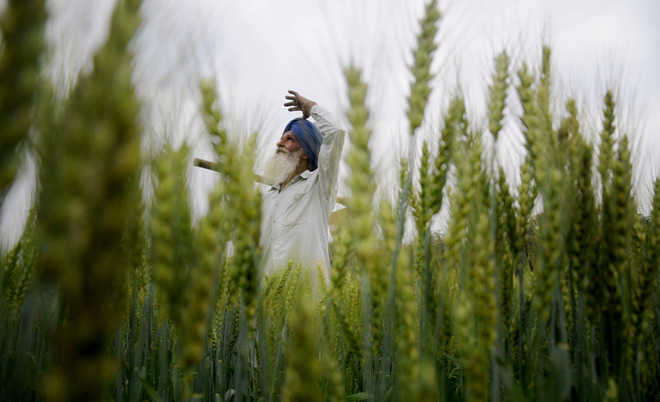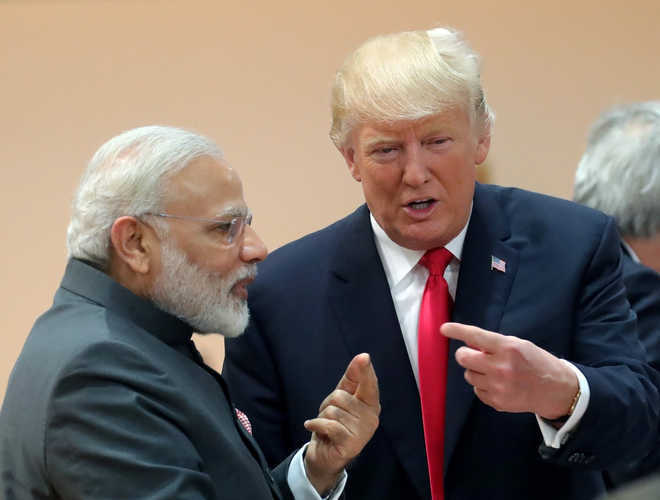
In retrospect, 9/11 was the defining moment of the re-engagement and recalibration of the US-Pak dynamics that till then were nestled in favour of Pakistan as a ‘major non-NATO ally’. After the Cold War ended in the 1990s, Pakistan had fallen off the immediate radar as Washington was busy meddling with the affairs of the Middle East. In the process, it effectively overlooked Pakistan’s dangerous transgressions as in Kargil, its support to terrorism in Kashmir or even its surreptitious stockpiling and proliferation of its nuclear wherewithal.
The ‘Bush-Mush’ equation underwent a sudden reality-check as the simplistic ‘with us or against us’ spirit accompanying the looming ‘war on terror’ was evident when the Deputy Secretary of State, Richard Armitage threatened Pakistan’s Intelligence Director ~ “Be prepared to be bombed. Be prepared to go back to the Stone Age”, in case Pakistan failed to join the US-led initiative against Al Qaida and the like.
Since then, Pakistan has undertaken a delicate dance of pandering to contradictory pulls from both the external and internal constituencies, leading to the perfection of its famed and patented ‘double game’. The coercive tone of the US notwithstanding, the Pakistanis had managed to extract three important concessions from Washington ~ an assurance that India and Israel would not join the mopping up operations, an undertaking that the US will not act unilaterally inside Pakistani territory and above all, securing the invaluable ‘reimbursements’ in exchange for its operational costs and commitments towards the ‘war on terror’. And yet, a reluctant and visibly embarrassed Pervez Musharraf had to publicly retract from his erstwhile policies of open-patronisation of the terror groups like the Taliban, and join the chorus of ‘war on terror’, albeit, selectively.
As per the US Agency for International Development (USAID) data, the US had sanctioned up to $33.4 billion during the past 15 years, of which 44 per cent ($14.57 billion) was earmarked for logistics and aerial support in the Afghan war, whereas the remainder $18.8 billion was meant for civilian and internal security-related infrastructure. However, given Pakistan’s track record of misuse, persistent ‘double game’ and cozying-up to the Chinese, the levels of US support and aid for Pakistan are steadily declining and the relationship is on a functional lifeline. According to opinion polls, the societies in both Pakistan and the US have the most negative perceptions of each other. This trust deficit between the two ‘allies’ has led to bitter counter-accusations, with Pakistan claiming $123 billion as the financial cost and the loss of 60,000 Pakistani lives, on account of its commitments towards the ‘war on terror’. The US administration, on its part, is increasingly talking about getting ‘ripped off’, with routine threats of cutting all military aid to Pakistan.
China has strategically moved into the vacuum created by the US disinterest in Pakistan, and is trying to plug the financial-military-diplomatic gap. As per the official Board of Investment figures released by the Pakistani PMO, the foreign investment inflow into Pakistan by the US in 2008-09 was $ 869.9 million and that of the Chinese was a negative $ 101.4 million. The figures for the July-November 2017-18 period read as $42.6 million by the US and $837.4 by the Chinese. The latest Pentagon report to the US Congress has upped the ante by reiterating, “To move forward, we must see fundamental changes in the way Pakistan deals with terrorist safe havens in its territory”. Rather provocatively, it suggests the “use of a range of tools to expand our cooperation with Pakistan in areas where our interests converge, and to take unilateral steps in areas of divergence”. This is virtually forcing Pakistan to drop its deliberate ambiguity and duplicity of the ‘double game’, failing which it will be left with only one recourse ~ sovereign sustenance, via China.
Beyond ‘all-weather-friendship’, the Sino-Pakistan equation is bereft of any civilisational, cultural or ideological convergence; it is an outright case of hardnosed realpolitik and compulsions. This over-dependence on Beijing is fraught with risks for Islamabad, as the implications of the China Pakistan Economic Corridor (CPEC) are gradually unfolding. Already rumour mills in Pakistan are awash with the hard bargaining that the Chinese have done in the CPEC projects, with the Pakistan government giving up a lot more than it secured in the bargain. Demeaning suggestions like making the Chinese yuan the free-usage currency in the Gwadar Free Zone has growing portents of compromising on Pakistan’s ‘economic sovereignty’.
Economically, the US remains the biggest trade partner (four times that of China). Militarily, Pakistan needs the US drones to target specific areas in the restive Af-Pak frontier. The bulk of Pakistani military hardware still has US-markings (F-16 fighter planes, Lockheed C-130 transporters, Cobra Attack Helicopters, M113 APC’s, artillery guns, Aati-tank missiles and so on). Therefore, beyond the political theatrics and sabre-rattling, a sudden freeze of US support could be devastating for the Pakistanis, both economically and militarily. Equally for the US, avoiding the Pakistani land routes and ‘airlifting’ the wares for its men and material deployed in landlocked Afghanistan, would be impractical and prohibitive.
There is an obvious urgency to curb the menace of extremist ideologies and the terror industry that is consuming, bleeding and sapping the vital interests and energies of both Pakistan and the US. Towards that end, Pakistan has to overcome its traditional instincts and confidence in retaining leverage with select terror groups (e.g. the Haqqani network that faces Afghanistan and Lashkar-e-Taiba, that faces India). It will have to dispense with its flawed belief in China adequately stepping in to fill in the vacuum caused by US disinterest.
The principal institutions in Pakistan ~ the military, the political class and the clergy ~ must desist from misusing the ‘extremist’ elements for furthering their own institutional interests in the ongoing turf wars for control of power. The US-bashing may make political and emotional sense in the short-run. However, for Pakistan to retain the economic-military control over its own sovereignty and destiny will call for Islamabad to make peace with its hypothetical “ghosts”, ulterior motives in the neigbourhood, and a reality check of the efficacy of its fabled ‘all-weather-friendship’ with China.
The writer IS Lt Gen PVSM, AVSM (Retd), Former Lt Governor of Andaman & Nicobar Islands & Puducherry








































































 ANIL DAYAL/HT
ANIL DAYAL/HT






















































